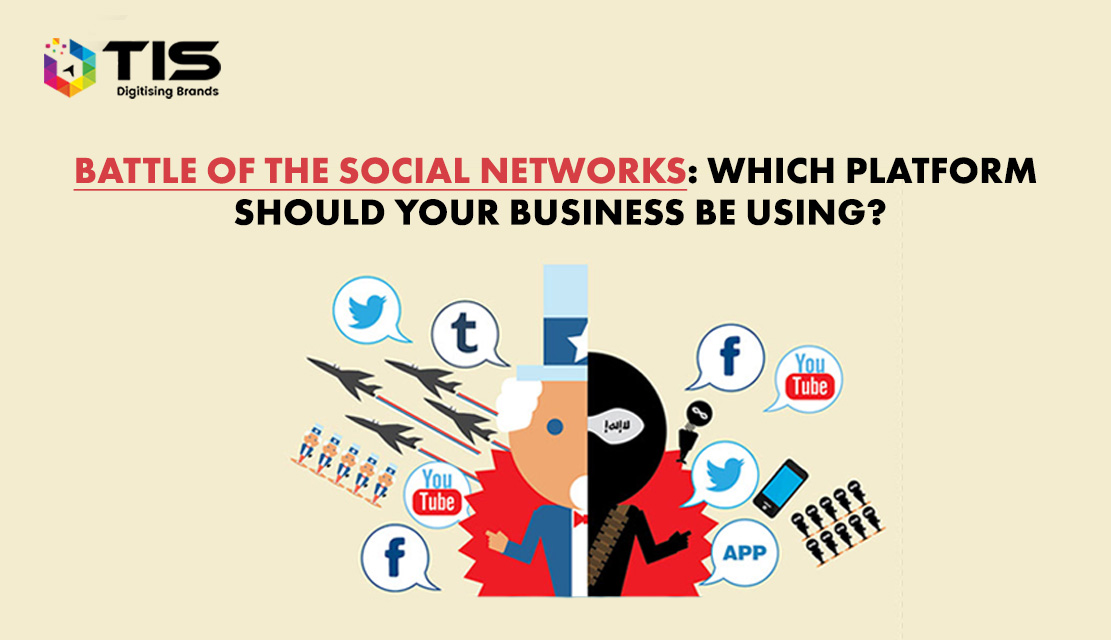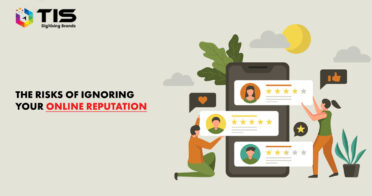Organizations need to demonstrate their strengths and maintain consistent engagement through the four most popular social media platforms: Instagram, Facebook, Twitter, and Snapchat.
Social media has become increasingly important to businesses as a way to promote their products, boost brand visibility, and boost engagement, so selecting the right social media platform has become increasingly difficult.
Here, we compare the most popular social media platforms to help businesses overcome this challenge.
Exploring the Unique Operations of Different Social Media Platforms
Each social media platform has its unique features that make it distinct from others. Instagram and Snapchat focus mainly on visual content such as pictures and videos, while Facebook emphasizes recent updates and encourages users to share fun elements. On the other hand, Twitter is more news-oriented and focuses on sharing the latest updates.
Content posted on Instagram and Facebook has a longer lifespan compared to Twitter and Snapchat. A tweet on Twitter lasts forever, but it gets replaced quickly by more popular tweets. Snapchat snaps disappear in 24 hours. Users share their photos, reels, and videos on Instagram, while Snapchat lets you send videos and pictures directly to your friends.
Instagram focuses more on visual content than Twitter, which focuses on text and hashtags. Snapchat is only for private chats with friends, while Facebook allows both public and private posting.
Choosing the most engaging social media platform: Which one offers the highest engagement rate?
The target audience is the most important thing to consider when marketing on social media. With Twitter, you can reach a wide audience in a single tweet, while Snapchat is more personal.
In terms of popularity, Instagram outperforms Snapchat, but Snapchat’s features like stories and live videos can create a higher engagement and recall rate. In contrast, Instagram allows businesses to engage with their audience by adding multiple photos, reels, and IGTV videos.
Comparing Snapchat and Facebook, posts on Facebook tend to add more value to the community quickly, while Snapchat’s value lies in personal interactions among friends and followers. Understanding the engagement rate of different social media platforms is crucial in developing an effective social media strategy.
Exploring the Distinctive Features of Social Media Platforms for Business Marketing
Instagram
- Photo and video sharing: Users can upload photos and videos to their profiles, as well as share them in stories and reels. Filters and other tools can be used to edit photos and videos.
- Stories are temporary posts that disappear after 24 hours on Instagram. Stories can be customized with text, stickers, GIFs, and more.
- Reels are 15-second videos that can be edited with music, text, and other creative elements. Shareable and discoverable through hashtags and other features.
- Instagram TV: Instagram TV lets you share longer videos, up to 60 minutes, both as a standalone app and inside Instagram. You can browse and share IGTV content.
- Explore page: Instagram curates content based on your interests and activity on the app for your Explore page. Photos, videos, and other content from accounts you might not follow yet.
- You can send direct messages to other Instagram users. Through Direct, they can also send disappearing photos and videos.
- Shopping: Instagram lets businesses tag products in their posts and stories, so users can shop for things they see. The app has a dedicated shopping tab.
- Business accounts on Instagram have insights and analytics that help them figure out how their content is doing. Metrics like reach, engagement, and follower demographics are available.
- Live streaming: Instagram users can share real-time content with their followers. Commenting and reacting lets them interact with their audience.
- Hashtags: Hashtags are a way for users to categorize their content and make it more discoverable. Users can follow hashtags and search for content by hashtag.
Facebook
- Almost everyone has a profile, which includes their name, profile picture, cover photo, and a bio. Additionally, users can add detail like their education, job, relationship status, and interests.
- Facebook’s News Feed is the central hub for friends’ updates, pages they follow, and ads. Based on engagement, relevance, and recency, the News Feed algorithm decides what posts to show users.
- Pages let businesses, organizations, celebrities, and other entities make a public presence on Facebook. Similar to personal profiles, pages offer tools for marketing and managing businesses, like analytics and advertising.
- Members of groups can connect and share content with other users who have similar interests, hobbies, or goals. Users can create or join public, private, or secret groups based on their preferences.
- Messenger: Messenger is Facebook’s messaging app, which lets you send text, voice, and video messages. Group chats, video calls, and payments are also available in Messenger.
- On Facebook, you can create and manage events like parties, concerts, and fundraisers. It’s easy to invite your friends and followers, share event details, and track RSVPs.
- Marketplace: The Marketplace is a feature that allows users to buy and sell items locally. Users can browse listings, message sellers, and make transactions through Facebook.
- Advertising: Facebook offers various advertising tools for businesses to promote their products and services. Advertisers can target specific audiences based on demographics, interests, behaviors, and more.
- Insights: Facebook Insights is a tool that provides analytic and data about a Page’s performance. Page owners can see metrics like reach, engagement, and demographics, which can help them improve their content strategy and measure their ROI.
Twitter
- Tweets: Twitter’s main feature is the ability to create and post short messages, called “tweets,” which are limited to 280 characters. Users can add links, images, videos, and hashtags to their tweets.
- Retweets: Users can share other people’s tweets with their own followers by clicking the “Retweet” button. Retweeted tweets appear on the user’s profile and are visible to their followers.
- Users can reply to other people’s tweets by clicking “Reply”. You can start a conversation thread by replying to the original tweet.
- User can add hashtags to their tweets to make them more discoverable. By clicking on a hashtag, users can see a stream of tweets with that hashtag.
- Users can mention other Twitter users in their tweets by including their username with an “@” symbol. Mentioned users get a notification and can see the tweet in their notifications.
- Direct Messages: Users can send private messages to other Twitter users who follow them. Direct Messages (DMs) can include text, images, and videos.
- Lists: Users can create and curate lists of Twitter accounts they follow. Lists can be private or public, and users can subscribe to other people’s lists.
- Moments: Twitter Moments are curated collections of tweets that tell a story or highlight an event. Moments can be created by Twitter or by users.
- Trends: Twitter shows users the most popular topics and hashtags that are being talked about on the platform in real-time. Users can click on a trend to see related tweets.
- Analytics: Twitter provides analytics for users who have a business account. Analytics includes data on tweet performance, audience demographics, and ad performance.
Snapchat
- Users can take photos and short videos, add text and filters, and send them to friends or post them on their stories with Snaps.
- Users can upload snaps to their stories, which are available for 24 hours and can be seen by all their followers.
- Users can chat with their friends one-on-one or in groups using text, voice, and video.
- Snapchat’s Discover section lets you discover and explore curated content from publishers, brands, and creators.
- Users can share their location, see where their friends are on a map, and explore stories from different locations around the world with Snap Map.
- Memories: A feature that lets users save their snaps to their camera roll or Snapchat’s cloud storage and access them later.
- Bitmoji: A personalized avatar that users can create and use to express themselves in their snaps and chats.
- Snaps can be enhanced with AR-based filters that transform the user’s face, add 3D objects, or create special effects.
- Snapchat Originals: Videos created exclusively for Snapchat, including shows, documentaries, and shorts.
- Mini-apps integrated into Snapchat that do things like order food, play games, and share meditation sessions.
Challenges in Social Media Platforms
- Social media platforms have been criticized for allowing false or misleading information to spread, which can have serious consequences for people and society.
- The internet can be a breeding ground for abusive behavior, including hate speech and cyberbullying.
- Users of social media platform may be at risk of identity theft, hacking, and other forms of digital intrusion.
- Mental health and addiction: Some experts are worried about social media’s addictive nature and its potential impact on mental health.
- Echo chambers: Social media can create polarized communities and reinforce preexisting beliefs, creating “echo chambers” where opposing views get drowned out.
- The algorithms that power social media platforms can unintentionally perpetuate biases and discriminatory practices, which can have serious consequences for marginalized groups.
- There are a lot of legal and ethical issues social media platforms have to deal with, including content moderation, censorship, and free speech.
- Some social media platforms have been criticized for engaging in monopolistic practices that limit user choice and stifle competition.
- Social media can have adverse societal effects like spreading hate speech, eroding trust in traditional media, and even manipulating political outcomes.
Here are some interesting facts about social media
- Facebook lets you connect with friends, family, and acquaintances through profiles, posts, message, and groups. It lets users share photos, videos, and updates about their lives, as well as follow pages and join communities.
- Instagram – A photo and video sharing app where you can upload, edit, follow, and search content based on hashtags and categories. Users can also share short videos and content on Instagram with features like stories, reels, and IGTV.
- Twitter – A microblog where you can post short messages, called “tweets,” up to 280 characters long. You can follow other accounts to see their tweets in chronological order, and you can browse tweets by hashtags and trends.
- Snapchat – A multimedia messaging app that allows users to send photos and videos that disappear after being viewed. Snapchat also offers features like stories, which allow users to post content that stays visible for 24 hours, and lenses and filters that can be applied to photos and videos.
In conclusion, when selecting a social media platform for business marketing, it is essential to understand the distinctive features and engagement rate of each platform. Instagram is ideal for sharing photos and video, creating stories and reels, engaging with audiences, and analyzing metrics. Facebook offers a personal profile, News Feed, Pages, Groups, Messenger, Events, and Marketplace for promoting and managing businesses, while Twitter provides a news-oriented platform for reaching a wider audience in a single tweet. Snapchat focuses on personal interactions with friends and followers, and its unique features like stories and live videos can create a higher engagement and recall rate. Ultimately, the platform chosen should align with the target audience, goals, and social media marketing strategies of the business.






 Mar 30, 2023
Mar 30, 2023






